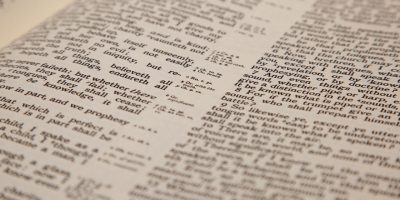The Book
of Ezra
summaries and outlines

Book Summary
The book of Ezra provides a much-needed link in the historical record of the Israelite people. When their king was dethroned and captured and the people exiled to Babylon, Judah as an independent nation ceased to exist. The book of Ezra provides an account of the Jews’ regathering, of their struggle to survive and to rebuild what had been destroyed. Through his narrative, Ezra declared that they were still God’s people and that God had not forgotten them.
Source: https://www.insight.org/resources/bible/the-historical-books/ezra

Title
Even though Ezra’s name does not enter the account of Judah’s post-Exilic return to Jerusalem until 7:1, the book bears his name (“Jehovah helps”) as a title. This is because both Jewish and Christian tradition attribute authorship to this famous scribe-priest. New Testament writers do not quote the book of Ezra.
[Source: Zondervan KJV Commentary, Copyright © 2010 by Zondervan.]

Author and Date of Writing
Jewish tradition has long attributed authorship of this historical book to the scribe and scholar Ezra, who led the second group of Jews returning from Babylon to Jerusalem. Ezra was a direct descendant of Aaron the chief priest (7:1–5), thus he was a priest and scribe in his own right.
The Ezra memoirs may be dated sometime after 440 BC and the Nehemiah memoirs sometime after 430. These were then combined with other materials somewhat later
[Source: https://www.insight.org/resources/bible/the-historical-books/ezra.]
EzraOutline
I. First Return From Exile and Rebuilding of the Temple
(chs. 1–6)
- First Return of the Exiles (ch. 1)
- The edict of Cyrus (Ezra 1:1–4)
- The return under Sheshbazzar (Ezra 1:5–11)
- List of Returning Exiles (ch. 2)
- Revival of Temple Worship (ch. 3)
- The rebuilding of the altar (Ezra 3:1–3)
- The Festival of Tabernacles (Ezra 3:4–6)
- The beginning of temple reconstruction (Ezra 3:7–13)
- Opposition to Rebuilding (Ezra 4:1–23)
- Opposition during the reign of Cyrus (Ezra 4:1–5)
- Opposition during the reign of Xerxes (Ezra 4:6)
- Opposition during the reign of Artaxerxes (Ezra 4:7–23)
- Completion of the Temple (4:24—6:22)
- Resumption of work under Darius (Ezra 4:24)
- A new beginning inspired by Haggai and Zechariah (Ezra 5:1–2)
- Intervention of the governor, Tattenai (Ezra 5:3–5)
- Report to Darius (Ezra 5:6–17)
- Search for the decree of Cyrus (Ezra 6:1–5)
- Darius’s order for the rebuilding of the temple (Ezra 6:6–12)
- Completion of the temple (Ezra 6:13–15)
- Dedication of the temple (Ezra 6:16–18)
- Celebration of Passover (Ezra 6:19–22)
II. Ezra’s Return and Reforms (chs. 7–10)
- Ezra’s Return to Jerusalem (chs. 7–8)
- Introduction (Ezra 7:1–10)
- The authorization by Artaxerxes (Ezra 7:11–26)
- Ezra’s doxology (Ezra 7:27–28)
- List of those returning with Ezra (Ezra 8:1–14)
- The search for Levites (Ezra 8:15–20)
- Prayer and fasting (Ezra 8:21–23)
- The assignment of the sacred articles (Ezra 8:24–30)
- The journey and arrival in Jerusalem (Ezra 8:31–36)
- Ezra’s Reforms (chs. 9–10)
- The offense of mixed marriages (Ezra 9:1–5)
- Ezra’s confession and prayer (Ezra 9:6–15)
- The people’s response (Ezra 10:1–4)
- The calling of a public assembly (Ezra 10:5–15)
- Investigation of the offenders (Ezra 10:16–17)
- The list of offenders (Ezra 10:18–43)
- The dissolution of mixed marriages (Ezra 10:44)
Adapted from: NIV Study Bible, Copyright © 1985, 1995, 2002, 2008, 2011 by Zondervan.
References and Sources:
The return from exile is depicted in this woodcut for Die Bibel in Bildern, 1860, by Julius Schnorr von Carolsfeld., Painting
By Julius Schnorr von Carolsfeld – Die Bibel in Bildern, Public Domain, https://commons.wikimedia.org/w/index.php?curid=5490747